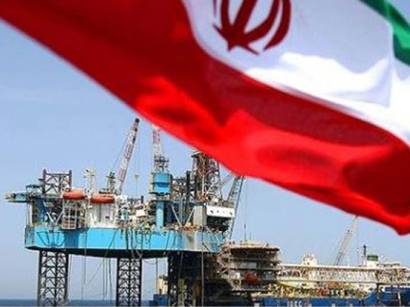ID :
410281
Wed, 06/22/2016 - 14:35
Auther :
Shortlink :
https://oananews.org//node/410281
The shortlink copeid
Iran seeking alternative route to contribute to EU’s energy security

Baku, Azerbaijan, June 21
By Umid Niayesh – Trend:
Tehran hosted a meeting to introduce an ambitious energy proposal dubbed the “Caspian Energy Hub.”
The meeting called "The Specialized Meeting of Caspian Energy Network Theory" was focused on the idea of converting gas to electricity to export it to the regional and trans-regional markets, including the EU.
The issue was raised for the first time in 2014 by Chris Cook, former director of the International Petroleum Exchange, who currently heads the UK-based Petro Scotland Research Institute, at a conference in Ashgabat convened by the Energy Charter organization under the auspices of the UN.
Under the thesis, it will be more economical for Caspian countries, which enjoy huge gas reserves, to convert their gas to electricity and export it instead of direct gas exports.
Addressing the meeting in Tehran on June 21, Azizollah Ramazani, the National Iranian Gas Company’s manager for international affairs said Iran, Turkmenistan and Azerbaijan, as well as regional energy suppliers can form a power grid in order to generate and export electricity, adding the electricity generated from gas can be exported to regional countries, which would be more beneficial than exporting gas itself.
Mahmoud Khaghani, former CEO of the Iranian Oil Ministry’s Caspian and Central Asia Affairs Bureau, told Trend June 21 that Caspian countries should be considered mainly as the gas holder countries, as their natural gas reserves are very high compared to their oil resources.
However, Khaghani believes that sending gas to the destination markets is more difficult than sending crude oil.
“Gas can not be supplied to the market as easy as oil can be, laying pipeline imposes high costs and it has become a very politicized issue in recent years,” said Khaghani, who served as the director for energy, minerals and environment at the ECO Secretariat in 1996-2000.
“On the other hand, in recent two years the German Siemens and some other engineering firms have made big achievements in HVDC (high-voltage direct current) technology, making possible and economical transfer of electricity for long-distance transmission, which offers promising prospect for the Caspian Energy Network,” said Khaghani.
He also said a trilateral memorandum of understanding was signed June 20 by Iran's Tehran University, the country’s private sector and Petro Scotland Research Institute to cooperate in studies with focus on converting gas to electricity and exporting it to the EU and Asia.
Based on the document inspired by the Caspian Energy Network theory, the three sides will launch a comprehensive study on the issue, he said.
He further touched upon the recent innovation of Iran, Azerbaijan, Russia and Georgia on establishing the North-South energy corridor, saying Turkey also has reached a deal worth $4.2 billion with Iran to build seven natural gas power plants to produce electricity from gas and export it.
“So, a new energy corridor from north to south and east to west, and vice-versa, can be formed, so that we can call it the New Energy Silk Road,” said Khaghani.
Early in February, Azerbaijani Minister of Energy Natig Aliyev said Azerbaijan, Iran and Russia are working on the establishment of the North-South energy corridor between the three countries.
Tehran and Baku have reached an agreement to synchronize their power grids, and via Azerbaijan the Iranian electricity network will join Russia's power grid. Tehran also has expressed readiness to link its electricity network with Europe through Russia.
Given all this, the Caspian Energy Hub, however still a “theory”, promises a new age of energy cooperation in the region, as a result of which the gas-rich Caspian states will contribute to the EU energy security not by direct gas exports, but by converting the gas to the electricity and transferring it through the “New Energy Silk Road”, which will be more profitable and secure for all the parties.
---
Umid Niayesh is Trend Agency’s staff journalist, follow him on Twitter: @UmidNiayesh





